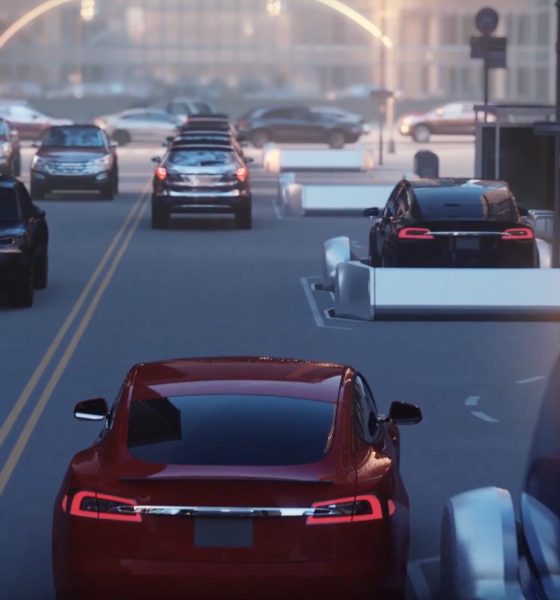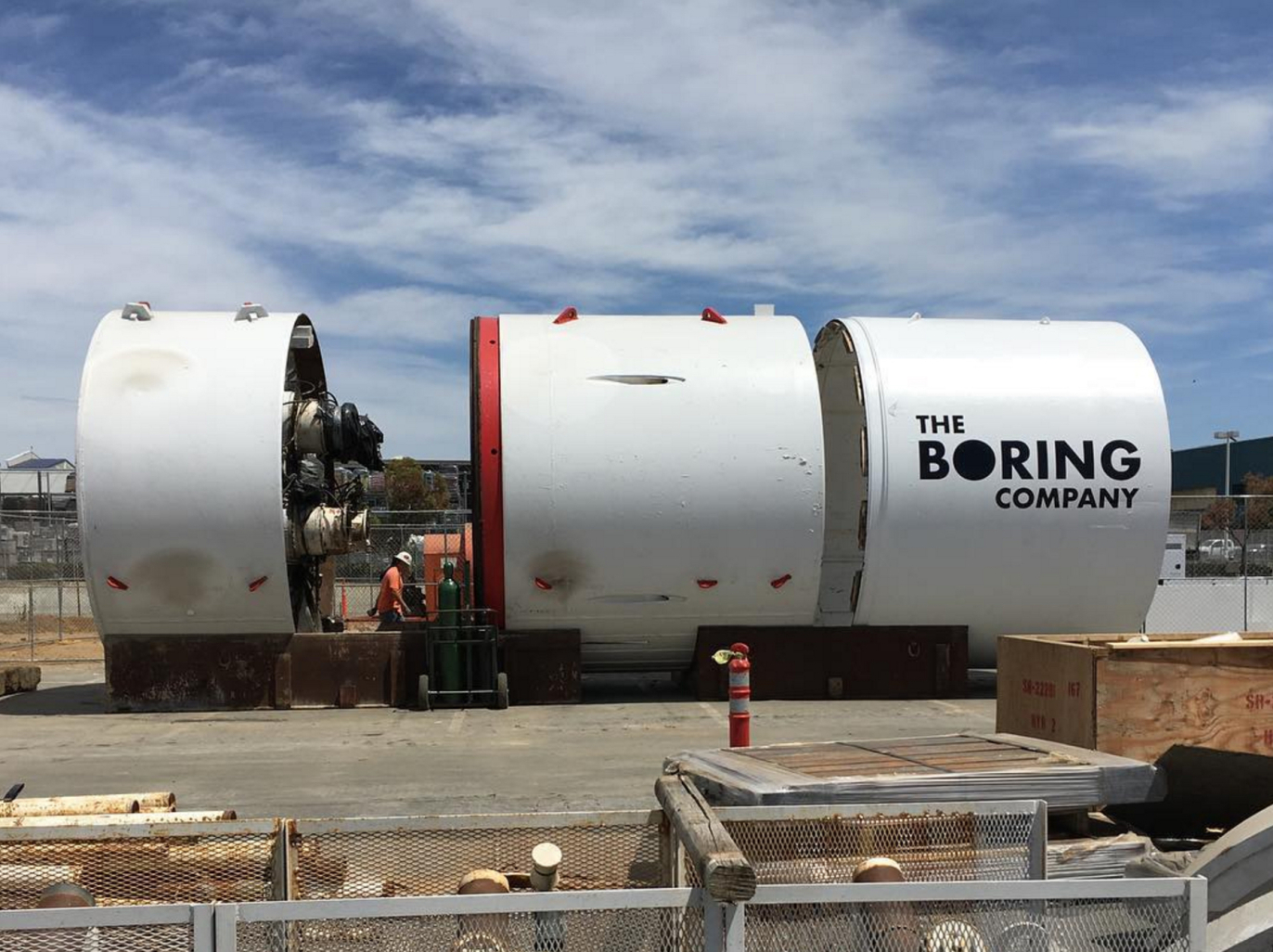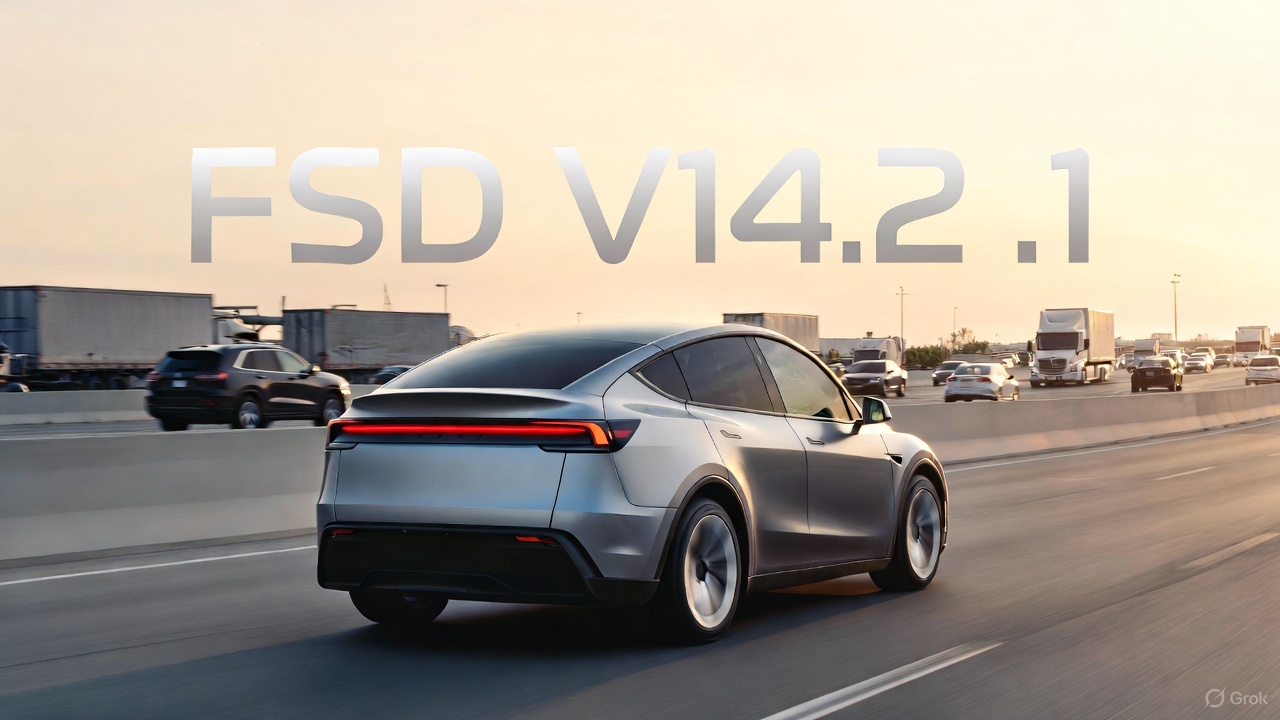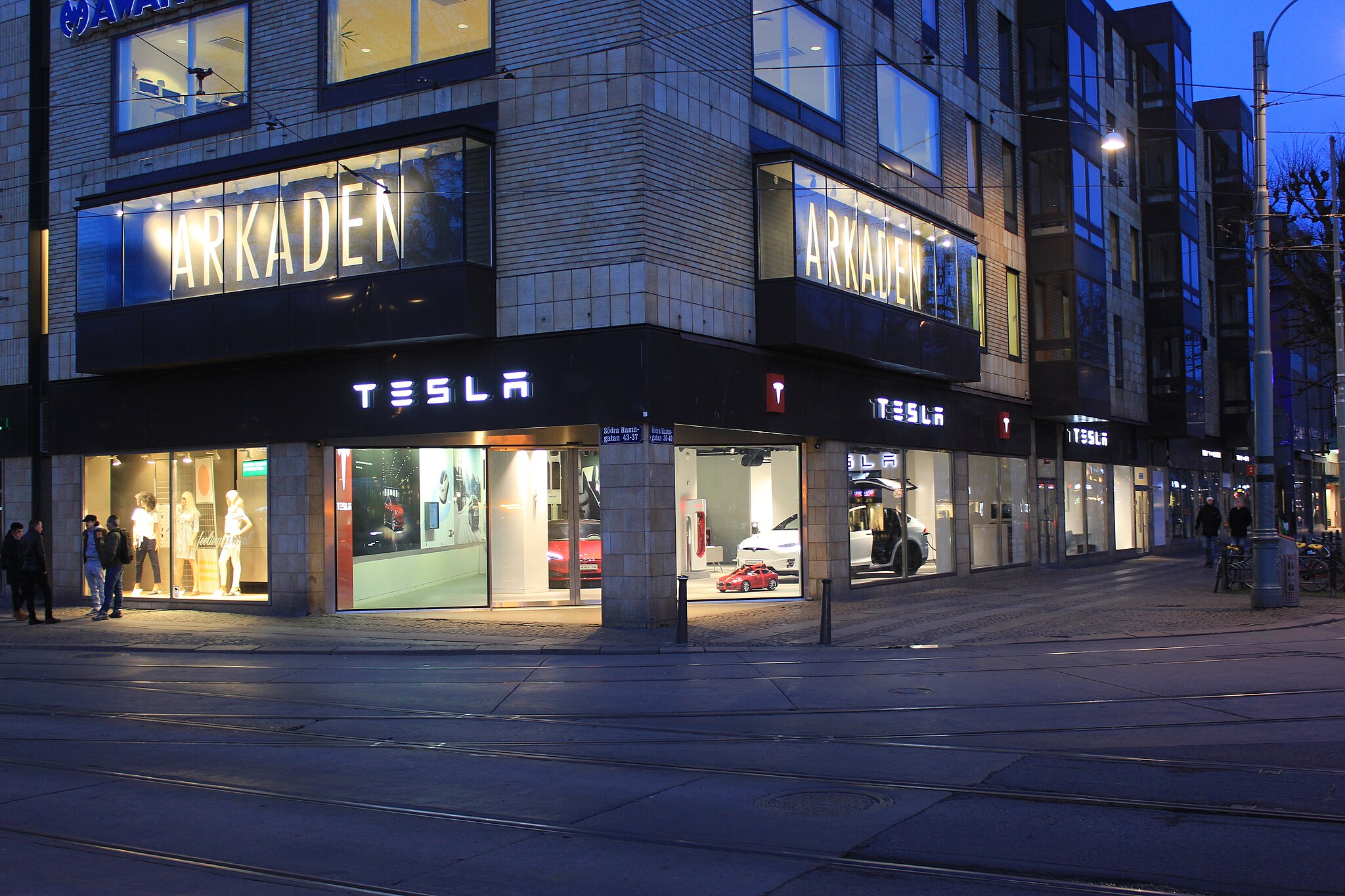

News
Musk outlines cost-cutting plan for Boring Co: cheaper, faster tunnel digging
One of the large reveals made by Tesla and SpaceX Chief Elon Musk at TED2017 was his plan to create a multi-layer high-speed tunnel infrastructure to support mobility by way of electric skates and Hyperloop tubes.
A key point that he drove home for the underground tunnel network was the integration of the system into cities.
“You have to be able to integrate the entrance and exit of the tunnel seamlessly into the fabric of the city. So, by having an elevator, sort of a car skate that is on an elevator, you can integrate the entrance and exits to the tunnel network just by using 2 parking spaces.”
Musk shared a video demonstrating how skate elevators would be integrated into city streets where they await vehicles looking to be transported through the underground labyrinth of tunnels. The serial tech entrepreneur envisions loading docks wherein vehicles would simply pull into the skate, get lowered into the tunnel network, and be sent along a slot car-like track at speeds of 200 km/h ( 124 mph). The Boring Company’s tunnel network won’t simply alleviate surface congestion, it will completely transform the way we move cars, people and freight, says Musk.
It is worth noting that The Boring Company and Tesla are under control of Musk, while the Hyperloop project has been open sourced, but with support from SpaceX.
Eliminating human drivers allows the skates to move at much faster speeds than human-controlled vehicles. Fixed routes within the tunnel network further improve safety beyond the dynamic nature of human-determined driving routes. The tunnel network is also infinitely scalable. “You can alleviate any arbitrary level of open congestion with a 3D tunnel network.” and that “There’s no real limit to how many levels of tunnels you can have.”, says Musk from TED2017.
The key barrier to creating tunnels today is the exorbitant cost. The recent 2.5 mile expansion to the Los Angeles subway system came at a cost of nearly $1 billion per mile. Musk and team at the Boring Company hope to cut the cost of tunneling by a significant amount by streamlining the tunneling process and reinventing the machines that help facilitate the digging.
https://www.youtube.com/watch?v=u5V_VzRrSBI
Building Tunnels For Less
First, the team is looking to cut the diameter of the tunnels they dig, moving from the traditional tunnel diameter for passenger vehicles of 26 to 28-feet to a 12-foot standard diameter which would be sufficient for the Tesla skate. On the surface, this might not seem like a lot, but cutting the diameter by 50% cuts the cross sectional area by a factor of four. This is significant as the speed and cost of tunneling is largely driven by the amount of cross sectional area to dig. Being able to cut out 75% of the time associated with digging comes with enormous cost savings.
Second, the team plans to attack head-on the way tunneling machines currently dig. Traditional machines dig, slowly and incrementally, then stop to install reinforcements to support the newly exposed earthen walls. Musk and team are working to install the reinforcements continuously thus eliminating the need to pause operations. This integration is expected to increase the speed of the overall process by as much as 50%.

The Boring Company tunneling machine spotted in front of SpaceX in April, 2017
Finally, the team believes that current digging machines are nowhere near their power and thermal limits, and is looking to ‘jack up the power’ to the digging machines. Doing this, the team hopes to increase the speed by a factor of 4 or 5 on top of the other improvements being suggested by Musk.
Musk also revealed that The Boring Company has a pet snail named Gary who can currently travel at 14 times the speed of existing tunneling machines. While this is more a testament about how slow the boring process is than the amazing speed of Gary, it is a fun target for the team, to be able to build tunnels quicker than Gary can crawl, and continues the comedic spin on the new company.
These tunnels could be kept at or near a vacuum to reduce or eliminate air resistance for all the moving objects within it. Curiously, Musk shared that,
“To withstand the water table, you have to design a wall to be able to withstand 5 or 6 atmospheres. To go to vacuum, you only need to be able to withstand 1 atmosphere.”
It is clear that Musk is very excited about this new Boring Company. He indicated during his sit down at TED2017 that he spends 2-3% of his time on the project, noting that it’s essentially being run as not much more than an intern project with a used boring machine and a few people dedicating partial effort to it.

News
Tesla FSD V14.2.1 is earning rave reviews from users in diverse conditions
Tesla’s Full Self-Driving (Supervised) software continues its rapid evolution, with the latest V14.2.1 update drawing widespread praise.

Tesla’s Full Self-Driving (Supervised) software continues its rapid evolution, with the latest V14.2.1 update drawing widespread praise for its smoother performance and smarter decision-making.
Videos and firsthand accounts from Tesla owners highlight V14.2.1 as an update that improves navigation responsiveness, sign recognition, and overall fluidity, among other things. Some drivers have even described it as “more alive than ever,” hinting at the system eventually feeling “sentient,” as Elon Musk has predicted.
FSD V14.2.1 first impressions
Early adopters are buzzing about how V14.2.1 feels less intrusive while staying vigilant. In a post shared on X, Tesla owner @LactoseLunatic described the update as a “huge leap forward,” adding that the system remains “incredibly assertive but still safe.”
Another Tesla driver, Devin Olsenn, who logged ~600 km on V14.2.1, reported no safety disengagements, with the car feeling “more alive than ever.” The Tesla owner noted that his wife now defaults to using FSD V14, as the system is already very smooth and refined.
Adverse weather and regulatory zones are testing grounds where V14.2.1 shines, at least according to testers in snow areas. Tesla watcher Sawyer Merritt shared a video of his first snowy drive on unplowed rural roads in New Hampshire, where FSD did great and erred on the side of caution. As per Merritt, FSD V14.2.1 was “extra cautious” but it performed well overall.
Sign recognition and freeway prowess
Sign recognition also seemed to show improvements with FSD V14.2.1. Longtime FSD tester Chuck Cook highlighted a clip from his upcoming first-impressions video, showcasing improved school zone behavior. “I think it read the signs better,” he observed, though in standard mode, it didn’t fully drop to 15 mph within the short timeframe. This nuance points to V14.2.1’s growing awareness of temporal rules, a step toward fewer false positives in dynamic environments.
FSD V14.2.1 also seems to excel in high-stress highway scenarios. Fellow FSD tester @BLKMDL3 posted a video of FSD V14.2.1 managing a multi-lane freeway closure due to a police chase-related accident. “Perfectly handles all lanes of the freeway merging into one,” the Tesla owner noted in his post on X.
FSD V14.2.1 was released on Thanksgiving, much to the pleasant surprise of Tesla owners. The update’s release notes are almost identical to the system’s previous iteration, save for one line item read, “Camera visibility can lead to increased attention monitoring sensitivity.”
News
Tesla FSD Supervised ride-alongs in Europe begin in Italy, France, and Germany
The program allows the public to hop in as a non-driving observer to witness FSD navigate urban streets firsthand.

Tesla has kicked off passenger ride-alongs for Full Self-Driving (Supervised) in Italy, France and Germany. The program allows the public to hop in as a non-driving observer to witness FSD navigate urban streets firsthand.
The program, detailed on Tesla’s event pages, arrives ahead of a potential early 2026 Dutch regulatory approval that could unlock a potential EU-wide rollout for FSD.
Hands-Off Demos
Tesla’s ride-along invites participants to “ride along in the passenger seat to experience how it handles real-world traffic & the most stressful parts of daily driving, making the roads safer for all,” as per the company’s announcement on X through its official Tesla Europe & Middle East account.
Sign-ups via localized pages offer free slots through December, with Tesla teams piloting vehicles through city streets, roundabouts and highways.
“Be one of the first to experience Full Self-Driving (Supervised) from the passenger seat. Our team will take you along as a passenger and show you how Full Self-Driving (Supervised) works under real-world road conditions,” Tesla wrote. “Discover how it reacts to live traffic and masters the most stressful parts of driving to make the roads safer for you and others. Come join us to learn how we are moving closer to a fully autonomous future.”
Building trust towards an FSD Unsupervised rollout
Tesla’s FSD (Supervised) ride-alongs could be an effective tool to build trust and get regular car buyers and commuters used to the idea of vehicles driving themselves. By seating riders shotgun, Tesla could provide participants with a front row seat to the bleeding edge of consumer-grade driverless systems.
FSD (Supervised) has already been rolled out to several countries, such as the United States, Canada, Australia, New Zealand, and partially in China. So far, FSD (Supervised) has been received positively by drivers, as it really makes driving tasks and long trips significantly easier and more pleasant.
FSD is a key safety feature as well, which became all too evident when a Tesla driving on FSD was hit by what seemed to be a meteorite in Australia. The vehicle moved safely despite the impact, though the same would likely not be true had the car been driven manually.
News
Swedish union rep pissed that Tesla is working around a postal blockade they started
Tesla Sweden is now using dozens of private residences as a way to obtain license plates for its vehicles.

Two years into their postal blockade, Swedish unions are outraged that Tesla is still able to provide its customers’ vehicles with valid plates through various clever workarounds.
Seko chairman Gabriella Lavecchia called it “embarrassing” that the world’s largest EV maker, owned by CEO Elon Musk, refuses to simply roll over and accept the unions’ demands.
Unions shocked Tesla won’t just roll over and surrender
The postal unions’ blockade began in November 2023 when Seko and IF Metall-linked unions stopped all mail to Tesla sites to force a collective agreement. License plates for Tesla vehicles instantly became the perfect pressure point, as noted in a Dagens Arbete report.
Tesla responded by implementing initiatives to work around the blockades. A recent investigation from Arbetet revealed that Tesla Sweden is now using dozens of private residences, including one employee’s parents’ house in Trångsund and a customer-relations staffer’s home in Vårby, as a way to obtain license plates for its vehicles.
Seko chairman Gabriella Lavecchia is not pleased that Tesla Sweden is working around the unions’ efforts yet again. “It is embarrassing that one of the world’s largest car companies, owned by one of the world’s richest people, has sunk this low,” she told the outlet. “Unfortunately, it is completely frivolous that such a large company conducts business in this way.”
Two years on and plates are still being received
The Swedish Transport Agency has confirmed Tesla is still using several different workarounds to overcome the unions’ blockades.
As noted by DA, Tesla Sweden previously used different addresses to receive its license plates. At one point, the electric vehicle maker used addresses for car care shops. Tesla Sweden reportedly used this strategy in Östermalm in Stockholm, as well as in Norrköping and Gothenburg.
Another strategy that Tesla Sweden reportedly implemented involved replacement plates being ordered by private individuals when vehicles change hands from Tesla to car buyers. There have also been cases where the police have reportedly issued temporary plates to Tesla vehicles.









